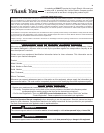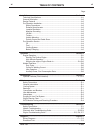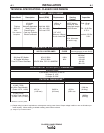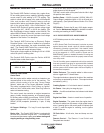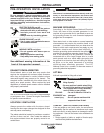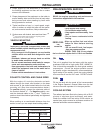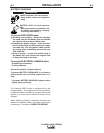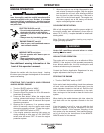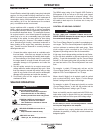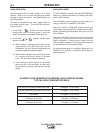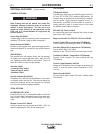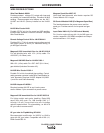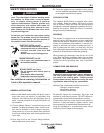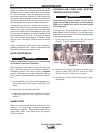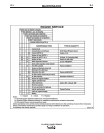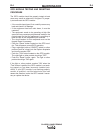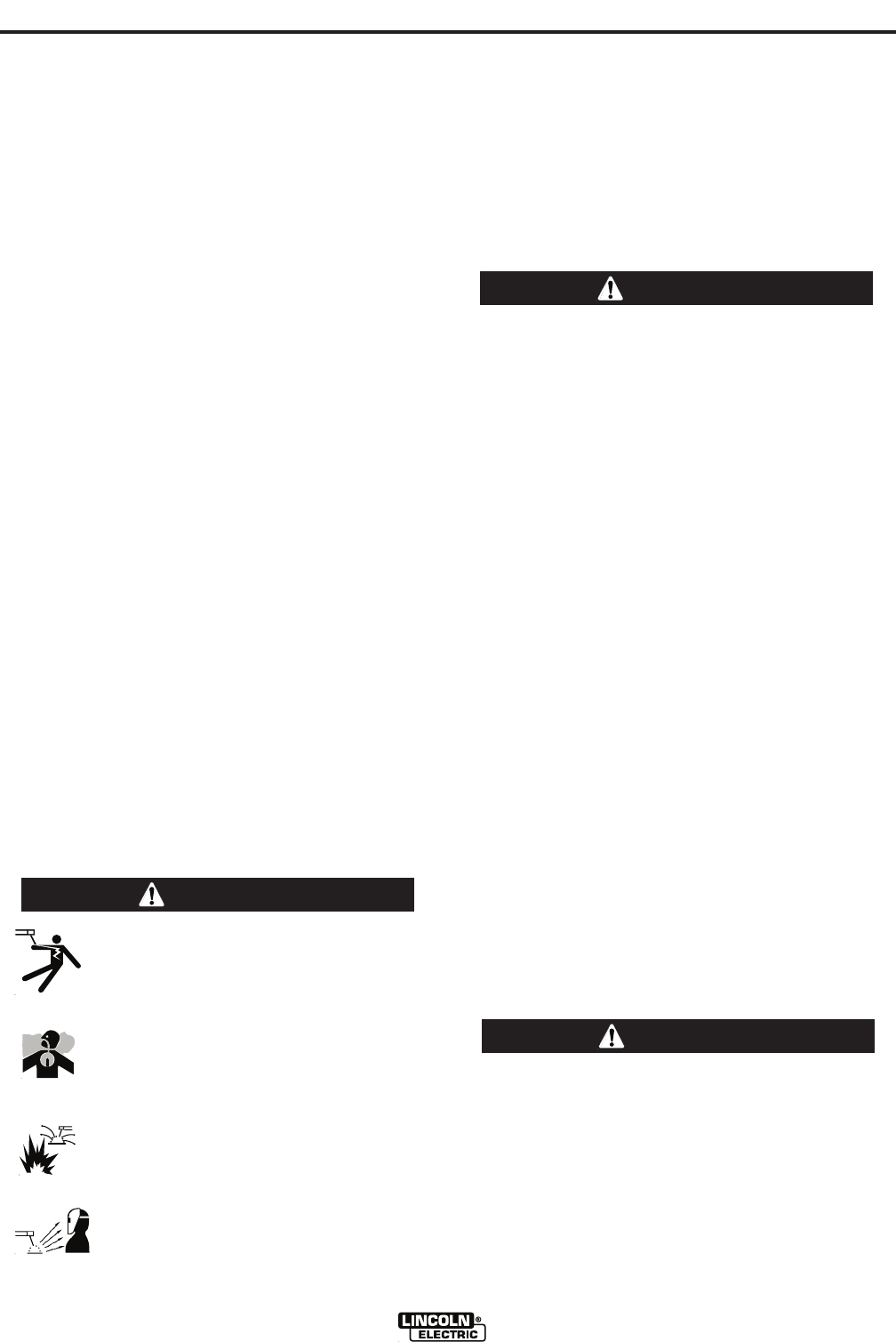
&')+ &%
#** R')" %*
% %)" %
Lincoln Electric selects high quality, heavy-duty industrial
engines for the portable welding machines we offer.
While it is normal to see a small amount of crankcase oil
consumption during initial operation, excessive oil use,
wet stacking (oil or tar like substance at the exhaust
port), or excessive smoke is not normal.
Larger machines with a capacity of 350 amperes and
higher, which are operated at low or no-load conditions
for extended periods of time are especially susceptible to
the conditions described above. To accomplish success-
ful engine break-in, most diesel-powered equipment
needs only to be run at a reasonably heavy load within
the rating of the welder for some period of time during
the engine’s early life. However, if the welder is subject-
ed to extensive light loading, occasional moderate to
heavy loading of the engine may sometimes be neces-
sary. Caution must be observed in correctly loading a
diesel/generator unit.
1. Connect the welder output studs to a suitable resis-
tive load bank. Note that any attempt to short the
output studs by connecting the welding leads togeth-
er, direct shorting of the output studs, or connecting
the output leads to a length of steel will result in cat-
astrophic damage to the generator and voids the
warranty.
2. Set the welder controls for an output current and
voltage within the welder rating and duty cycle. Note
that any attempt to exceed the welder rating or duty
cycle for any period of time will result in catastrophic
damage to the generator and voids the warranty.
3. Periodically shut off the engine and check the
crankcase oil level.
.#)&')+ &%
,+00#
The NEMA output rating of the Classic® 300D Perkins is
300 amperes at 32 arc volts on a 60% duty cycle (consult
Specifications in this manual for alternate ratings). Duty
cycle is based on a ten minute period; thus, the welder can
be loaded at rated output for six minutes out of every ten
minute period.
&%+)&#&.# %,))%+
&%&++,)%+U,))%+)%*#+&)V
. #.# %3642FD6E964FCC6?E>2J2C436EH66?
E964@?E24ED2?552>286E96DH:E49
------------------------------------------------------------------------
The “Current Range Selector” provides five overlapping cur-
rent ranges. The “Fine Current Adjustment” adjusts the cur-
rent from minimum to maximum within each range. Open
circuit voltage is also controlled by the “Fine Current
Adjustment” permitting control of the arc characteristics.
A high open circuit voltage setting provides the soft “butter-
ing” arc with best resistance to pop-outs preferred for most
welding. To get this characteristic, set the “Current Range
Selector” to the lowest setting that still provides the current
you need and set the “Fine Current Adjustment” near maxi-
mum.
For example: to obtain 175 amps and a soft arc, set the
“Current Range Selector” to the 190-120 position and then
adjust the “Fine Current Adjustment” for 175 amps.
When a forceful “digging” arc is required, usually for vertical
and overhead welding, use a higher “Current Range
Selector” setting and lower open circuit voltage.
For example: to obtain 175 amps and a forceful arc, set the
“Current Range Selector” to the 240-160 position and the
“Fine Current Adjustment” setting to get 175 amps.
Some arc instability may be experienced with EXX10 elec-
trodes when trying to operate with long arc techniques at
settings at the lower end of the open circuit voltage range.
&%&+2EE6>AEE@D6EE96UFCC6?E)2?86*6=64E@CV36EH66?
E967:G6A@:?ED56D:8?2E65@?E96?2>6A=2E6
------------------------------------------------------------------------
These switches have a spring loaded cam which almost
eliminates the possibility of setting this switch between the
designated points.
#+) X*&"42?<:==
Q@?@EE@F496=64EC:42==J=:G6A2CED@C
6=64EC@56H:E9D<:?@CH6E4=@E9:?8
Q ?DF=2E6J@FCD6=77C@>H@C<2?58C@F?5
------------------------------------------------------------------------
,$***42?3652?86C@FD
Q"66AJ@FC9625@FE@7E967F>6D
Q,D6G6?E:=2E:@?@C6I92FDEE@C6>@G6
7F>6D7C@>3C62E9:?8K@?6
------------------------------------------------------------------------
.# %X*')"*42?42FD67:C6@C
6IA=@D:@?
Q"66A7=2>>23=6>2E6C:2=2H2J
------------------------------------------------------------------------
)X)0*42?3FC?
Q.62C6J662C2?53@5JAC@E64E:@?
-----------------------------------------------------------------------
.)% %
,+ &%
,+ &%



